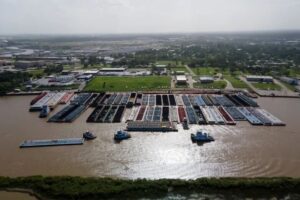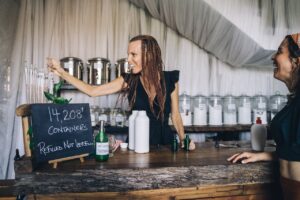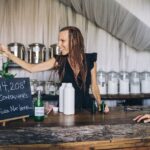This is the second in a three-part series by Rebecca McClay that explores how journalists can better investigate the relationship between business and environment.
In the first article examining the intersection of business and the environment, we explored numerous ways journalists can find stories in how companies may impact water quality, but there are also a wide variety of ways reporters can investigate businesses’ impact on land.
Chemical and nuclear plants, industrial factories and oil refineries are among the most notorious land polluters, but land contamination can come from countless sources. Mining and deforestation are other top polluters, along with the housing and agriculture industries. Which industries are more prevalent in your coverage area? Are they required to report their environmental impacts?
Researching a meaningful story on land pollution starts with finding the local issues in your area and analyzing the right data. The best starting point for snooping around topics in your area is the Environmental Protection Agency. While it’s a federal agency, the EPA’s website allows you to enter your zip code or city and search for topics at a very local level. For example, I entered “Annapolis” and found that the area’s land highlights include the fact that there are parcels there on the national priorities list.
As of April 2011, there were about 1,290 polluted land pieces on the list that were previously used as metal foundries, landfills, dry cleaning sites, industrial manufacturing. Where are those companies now? Are they still operating locally? What changes have they made to their practices? If they were responsible for the pollution, were they held accountable?
In addition, several communities have packaged reports on their environmental conditions with the EPA, such as Bowie, Md., which has its 2010 State of the Environment Report posted there. Business reporters covering Bowie would find several stories in that report. For example, BGE electric utility company had to trim a large number of trees for its business and is planning to subsidize a large-scale tree canopy program to replace the lost canopy.
Turn to your state’s department of the environment for story leads. New York’s Department of Environmental Conservation posted several brief releases about companies penalized for environmental violations. Business reporters can follow up with whether they abide by new requirements and look to see how the company, if it has other locations, is behaving elsewhere.
When you find an interesting or suspicious topic, verify your findings. Check with your local environmental engineers, who are on the frontlines of investigating and measuring land conditions. Also, if you have negative findings, confirm them with the company. Many larger companies like Coca-Cola post an environmental report on their website that details their standards, goals and environmental programs. Compare the most recent reports to those from years prior to see how the company’s environmental priorities have evolved.
Businesses can have a harmful effect on land pollution, but increasingly tighter regulations to protect the environment can have a harmful effect on businesses. Whenever your state or local municipality passes a law to improve environmental quality, be sure to explore how the businesses will fare.
For example, Berkeley, Calif., led the charge in banning polystyrene packaging, followed by more than 20 U.S. cities, such as Portland. The ban is likely to spread to other cities that want to better manage landfill issues, and journalists there should ask how their retailers and restaurants will fare without the product. What will the impact be on the distributors and manufacturers of Styrofoam containers? How will jobs there be impacted? Many U.S. towns and cities are considering measures against plastic bags, as Portland passed recently, and reporters there can follow the impact in a similar way.











